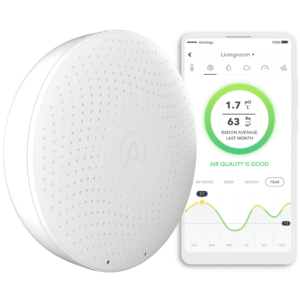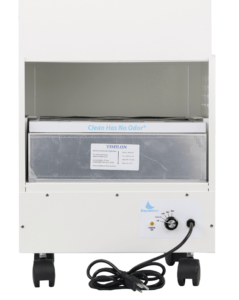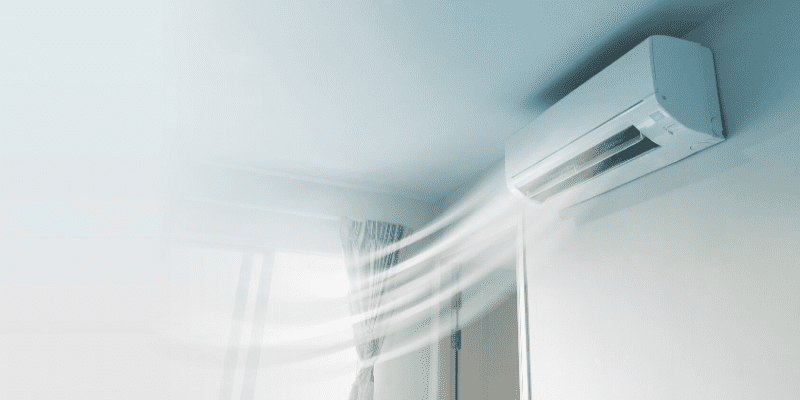When it comes to the smell inside of your home, the air and the quality of the air in this environment will play a critical role in the aroma that this air gives off into this space. Often times when your home has taken on this odor that can be associated with ‘stale’ smell it can point to problems with your indoor air quality, particularly poor circulation or airflow in the indoor space that has led to accumulation of contaminants in the air that cause this altering of the smell of air. Recently, indoor air quality has gained major attention, as more and more research come out from environmental agencies such as the Environmental Protection Agency (EPA) regarding indoor air quality problems.
One finding from the EPA found that human exposure to air pollutants indicated that indoor levels of pollutants may be two to five times – and occasionally more than 100 times – higher than outdoor levels. These levels of indoor air pollutants have become increasingly concerning as most Americans spend an estimated 90 percent of their time indoors, which will increase exposure and potential health effects overtime in the indoor space. Therefore, if and when you begin to smell the unmistakable scent of ‘stale’ air in your home, it may be time to take a closer look at your home’s air, the pollutants present in this air space, and solutions that can be implemented to remediate this ‘stale’ air problem.
In this article we are going to learn more about the potential health effects of stale air, the proper ventilation and airflow that should be produced inside of a home, and the best methods to removing stale air from your indoor air space.
What is Stale Air
There is nothing quite better than the fragrant, refreshing smell of fresh air circulating within your home. However, overtime as certain pollutants and contaminants find their way into the air it will taint the smell of this air and produce what is labeled as ‘stale air’. A proper definition for stale air would be when fresh air becomes tainted by the accumulation of certain chemicals and pollutants in the air such as VOCs, MVOCs, microorganisms, and even odorous compounds that will form and spread throughout the indoor air space of a home. The ration of airborne contaminants to oxygen will increase the lack of fresh air in the space, which will ultimately result in this stale air smell spreading throughout the air space of this environment.
As we discussed previously, one of the most common sources of stale air in a home will come from MVOCs, which are chemical compounds that have a very low odor threshold that will come from microbial colonies that can start to cause a room to smell. This type of chemical compounds [MVOCs] are caused by bacteria and fungi growth that will cause and produce those musty odors into the air of your home. Overtime as these funguses and bacteria continue to grow and progress in the indoor space of your home, especially without proper air flow and ventilation, this will lead to the home taking on that stale smell in the air.
Stale Smell in House
The root cause of stale air in a home will come directly from lack of ventilation within the property. As we discussed previously, airborne pollutants that find their way into the air of your home such as VOCs, MVOCs, and other microorganisms will allow for musty, stale smell to accumulate in the air space of this environment. However, poor ventilation and air flow in the home will lead to these pollutants becoming trapped in the air which will progress and worsen the stale smell surrounding the home. When air becomes confined to an enclosed space, such as a room or a home, these pollutants and moisture in the air will start to accumulate and leave the space feeling ‘stuffy’ which will lead to stale smell in the air. Thus, the important of having proper ventilation in the home such as fans and airflow that will move out stale air and replace it with fresh outdoor air.
Unfortunately, the best way to increase ventilation in a home is to increase the air exchange rate inside this space, and this can require a lot of energy use – especially when using your air handling system. Modern, energy efficient buildings can be a major problem for air quality problems, due to the fact that they are built and designed to prevent unwanted airflow in and out of a home, which will increase the buildup of stale air in the indoor space. These living conditions will lead to the constant recirculation of air in the home, rather than it being filtered out with outside air, leaving the stale smell to linger in the indoor space of the home.
How Often Should You Ventilate Your House?
Ventilating your home is important to do all year round, especially when you are dealing with the strong, potent smell of stale air in this indoor space. Proper ventilation in a home will help to not only flush out airborne pollutants and moisture, but it will also help to alleviate and remove smells out of the air like stale air smell. Ventilation and airflow inside of a home will help to push out the stale contaminated air and replace it with fresh outdoor air that will help to flush out some of the contaminants in the air and improve the indoor air’s smell that can be tainted by chemicals such as MVOCs.
When it comes to ventilating your home, this should be done daily especially when you feel as though your home has become tainted by indoor air pollutants or that it has acquired this unwanted ‘stale air’ smell. The best ways to ventilate the home will include opening doors and windows, adding fans in areas of high moisture, or even increasing airflow throughout the indoor space.
Is Stale Air Bad for You?
Stale air can be the result of poorly circulated or not circulate air inside of a home that will accumulate this odor and lead to poor indoor air quality in this indoor space. Indoor air quality can be contaminated by pollutants such as VOCs, MVOCs, allergens, odors, and other fine particulate matter. According to the World Health Organization (WHO), household air pollution is one of the leading causes of disease and premature death in the developing world. Exposure to these various pollutants, especially in higher concentrations in the air, can lead to a wide range of adverse health outcome in all occupants including children and adults. These adverse health effects can include respiratory illnesses, eye problems, and even in extreme cases cancer- according to WHO.
Generally, stale air that is not circulated can be unhealthy, and depending on the toxins and pollutants present in the air the severity of this stale air can vary. If you have started to experience stale air within your home, it is important to assess the air quality by either testing the indoor air using specific tools and measuring devices, or by assessing your health and the symptoms that you may be experiencing when in your home.
How to Test Indoor Air Quality
Air quality in a home is an often-overlooked aspect of this environment, but it is an important aspect that needs to be focused on more, especially when you are experiencing stale air in the living space. Harmful chemicals and pollutants can spread through the air in your home and eventually will impact the indoor air quality and potentially the health of occupants in this space. When it comes to identifying and understanding how many pollutants that are present in your home’s air, the best tool to use will be an at-home air quality meter. Air quality meters will work by assessing the air in an enclosed space such as your home and provide a snapshot data of the pollutants in the air as the meter runs inside the space.
 The Airthings Wave Plus is among the first battery-operated smart IAQ monitor with radon detection including sensors for temperature, air pressure, humidity, TVOCs, and CO2. Airthings Wave Plus gives you complete control over your indoor air quality via the free mobile app and online Dashboard with advanced Analytics options. Getting started with the Airthings Wave app is easy, create your free profile and then follow the setup guide in the Airthings App. Many Airthings products are smart home devices that works with Alexa, Google Assistant and IFTTT (if this then that) giving you an integrated clean air experience. Therefore, this device will allow for you to understand what’s in your homes air to help you combat and improve the air quality in this space to help with occupant health and even air smell such as stale air odor.
The Airthings Wave Plus is among the first battery-operated smart IAQ monitor with radon detection including sensors for temperature, air pressure, humidity, TVOCs, and CO2. Airthings Wave Plus gives you complete control over your indoor air quality via the free mobile app and online Dashboard with advanced Analytics options. Getting started with the Airthings Wave app is easy, create your free profile and then follow the setup guide in the Airthings App. Many Airthings products are smart home devices that works with Alexa, Google Assistant and IFTTT (if this then that) giving you an integrated clean air experience. Therefore, this device will allow for you to understand what’s in your homes air to help you combat and improve the air quality in this space to help with occupant health and even air smell such as stale air odor.
How to Remove Stale Air from House
When it comes to taking steps to remove the stale air smell inside of your home, it is necessary to consider many aspects in the environment, such as energy usage, ventilation, and air flow. The increasing of ventilation and air flow is critical in the mitigation process of stale air within a home, and this increase in ventilation can come from a variety of sources such as opening windows and doors, using exhaust fans in certain rooms, changing out HVAC filters, or even adding air filtration such as an air purifier to the indoor living space. The easiest ways to try to mitigate stale air from a home is to open windows and use the exhaust fans in the house to try to remediate this indoor air situation. In addition, using and running your HVAC system will help to increase air flow and ventilate the environment, however, this can lead to a lot energy use which can be costly when it comes to your electric bill.
 Another great option to use in your home for stale air removal will also be the use of air purifiers in the environment. Air purifiers are air filtration devices that work by pulling air into the machine rapidly to filter the indoor air that is within this indoor space. The EnviroKlenz Air Purifier is a revolutionary air purifier that can be a great option for removing a variety of airborne pollutants including those pollutants that may be the cause behind the stale air smell in your home’s air. The EnviroKlenz technology used in the air purifier is a patented technology that works by capturing, containing, and neutralizing a broad spectrum of noxious and toxic chemical and odors from the air including VOCs that may be to blame for your home’s stale air. In addition, the EnviroKlenz Mobile Air System also uses a hospital-grade HEPA filter for fine particulate removal larger than 0.3 microns in size at a 99.99 percent efficiency. Thus, this EnviroKlenz Mobile Air System will be the ultimate air purifier to help eradicate a broad spectrum of pollutants from the air that can be behind the stale air smell that is circulating within your home.
Another great option to use in your home for stale air removal will also be the use of air purifiers in the environment. Air purifiers are air filtration devices that work by pulling air into the machine rapidly to filter the indoor air that is within this indoor space. The EnviroKlenz Air Purifier is a revolutionary air purifier that can be a great option for removing a variety of airborne pollutants including those pollutants that may be the cause behind the stale air smell in your home’s air. The EnviroKlenz technology used in the air purifier is a patented technology that works by capturing, containing, and neutralizing a broad spectrum of noxious and toxic chemical and odors from the air including VOCs that may be to blame for your home’s stale air. In addition, the EnviroKlenz Mobile Air System also uses a hospital-grade HEPA filter for fine particulate removal larger than 0.3 microns in size at a 99.99 percent efficiency. Thus, this EnviroKlenz Mobile Air System will be the ultimate air purifier to help eradicate a broad spectrum of pollutants from the air that can be behind the stale air smell that is circulating within your home.
Article Sources:
- United States Environmental Protection Agency (EPA): Why Indoor Air Quality is Important to Schools (link)
- United States Environmental Protection Agency (EPA): Fundamentals of Indoor Air Quality in Buildings (link)
- Energy Guide: How to Air Your House Properly (link)
- World Health Organization (WHO): Household Air Pollution: Health Impacts (link)
Mobile Air System
✓ Patented earth mineral technology works to attack VOCs and break them down on a compound level
✓ No chemicals or masking agents
✓ Will not release any chemicals back into your environment
✓ Safer and faster at removing VOC’s than traditional carbon filters and PECO air purifiers








